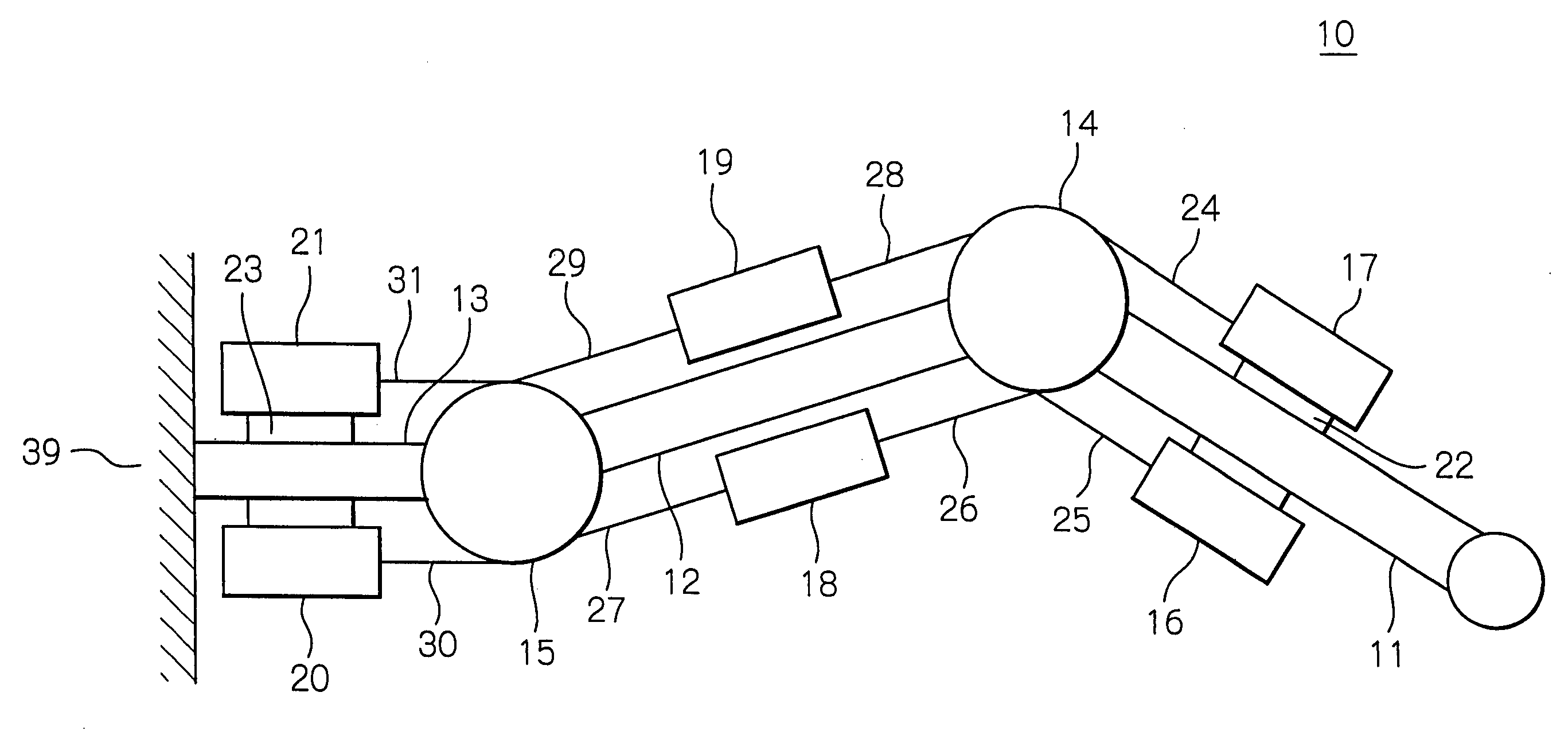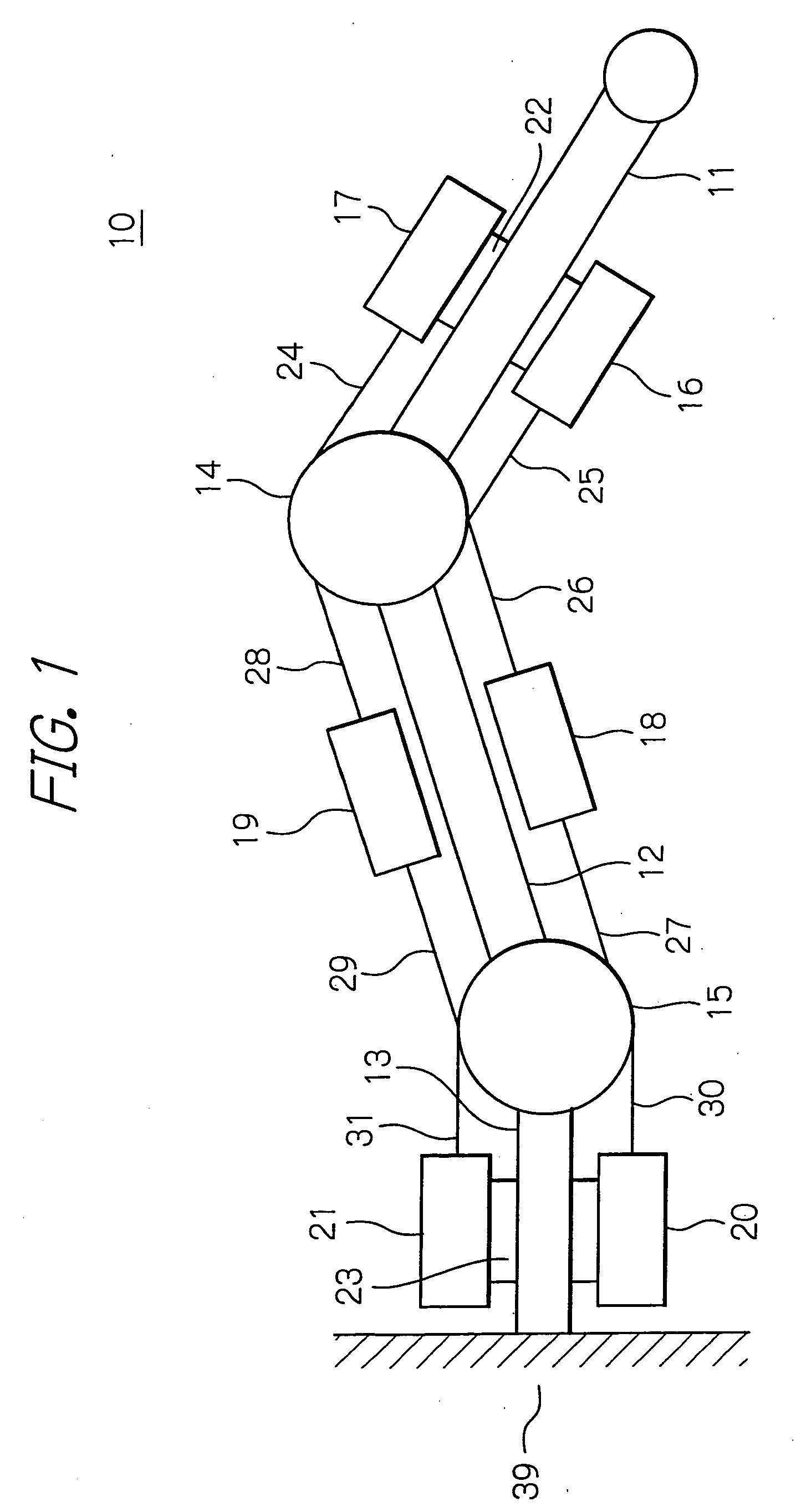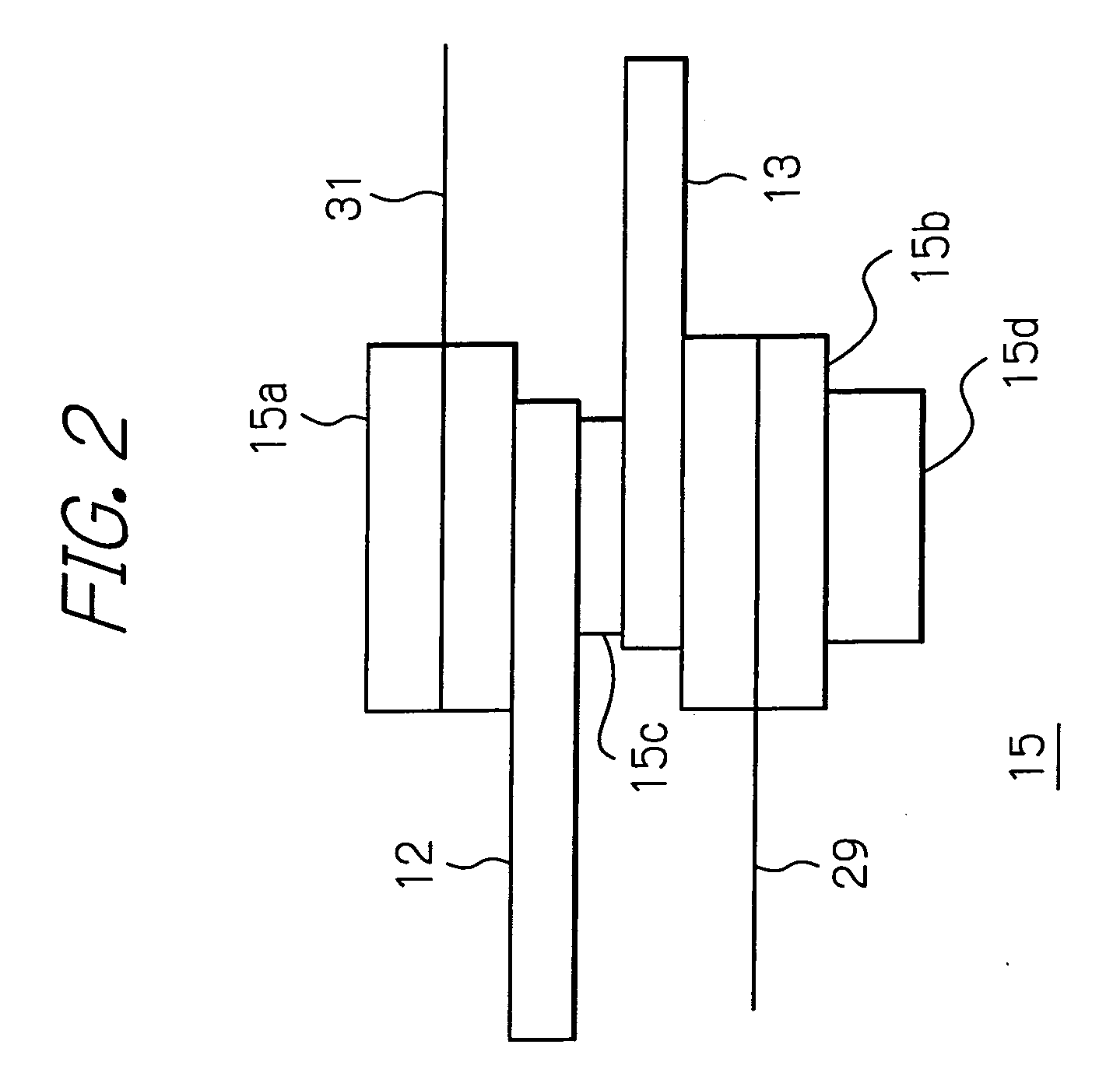Robot for training a rehabilitator
- Summary
- Abstract
- Description
- Claims
- Application Information
AI Technical Summary
Benefits of technology
Problems solved by technology
Method used
Image
Examples
first embodiment
[0041]In FIG. 1, a bi-articular arm device 10 is included in a robot for training a trainer in rehabilitation exercise, or a rehabilitator, and has a structure simulating the lower limb, that is, a leg, of the human body. The bi-articular arm device 10 may alternatively be of a structure that simulates the upper limb, that is, an arm, of the human body. The following description will, however, focus on the bi-articular arm device 10 having its structure simulating the lower limb of the human body.
[0042]The bi-articular arm device 10 has a first link 11 that simulates the lower limb is for the lower thigh, and a second link 12 that simulates the lower limb is for the upper thigh. A frame 13, as a base, is for the waist part, and has a proximal part (left-hand end in FIG. 1) secured to a stationary member 39, secured in turn to, for example, a foundation, not shown. To the distal end (right-hand end in FIG. 1) of the frame 13 is rotatabley connected the proximal end of the second lin...
third embodiment
[0125]Since the constitution of the robot for training a rehabilitator is similar to that of the above-described third embodiment, a repetitive description thereof will be dispensed with.
[0126]The control block diagram of the bi-articular arm device 100 for the present embodiment is shown in FIG. 22. In this figure, a transfer function 110 for the first motor 68 includes inertial moments about the first link 65 and the second link 64. In similar manner, a transfer function 101 for the second motor 69 includes the inertial moment about the first link 65.
[0127]The reference numerals 102, 103 denote controllers for causing voltages corresponding to the target torque values T1ref and T2ref to be applied to the transfer functions 110, 101, as controlled objects, respectively. The reference numerals 106, 107 each denote a transfer function including the spring element K and a distance (radius) R from the center of rotation of the joint up to a point on which acts the spring, as shown in F...
second embodiment
[0139]Referring to FIG. 25, the controller of the present embodiment may be the controller of the second embodiment shown in FIG. 16 in which there are additionally provided light emitting driving circuits 130 to 135, as drivers for the light emitting sections 122 to 127. Meanwhile, the light emitting sections 122 to 127 are here assumed to be light emitting diodes.
[0140]The light emitting driving circuits 130 to 135 are connected to the light emitting sections 122 to 127, respectively, and turn the light emitting sections 122 to 127 on or off under the instructions from the central processor unit 150.
[0141]The controller of the present embodiment may also be the controller of the first embodiment of FIG. 5 in which there are additionally provided the light emitting driving circuits 130 to 135.
[0142]The operation of the bi-articular arm device 210 of the present embodiment will now be described. For optionally setting the actuator(s), which are to be in operation, as in the above-de...
PUM
 Login to View More
Login to View More Abstract
Description
Claims
Application Information
 Login to View More
Login to View More - R&D
- Intellectual Property
- Life Sciences
- Materials
- Tech Scout
- Unparalleled Data Quality
- Higher Quality Content
- 60% Fewer Hallucinations
Browse by: Latest US Patents, China's latest patents, Technical Efficacy Thesaurus, Application Domain, Technology Topic, Popular Technical Reports.
© 2025 PatSnap. All rights reserved.Legal|Privacy policy|Modern Slavery Act Transparency Statement|Sitemap|About US| Contact US: help@patsnap.com



